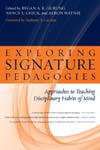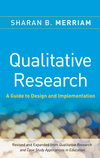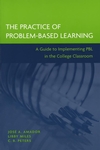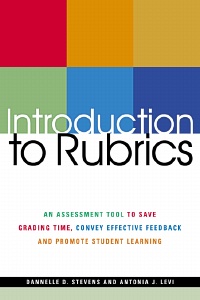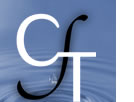 |
||||||||||
CFT Library
Overview
The Center has a steadily growing library related to teaching and learning, including books, journals, videotapes and DVDs, and articles.
Located at the CFT (1114 19th Avenue South), the library holdings are listed in ACORN, Vanderbilt's online library catalog. These holdings address a variety of issues, and are particularly rich in the areas of active and collaborative learning, course design, assessment, educational theory, and professional development.
New at the CFT Library
Note that clicking on the book titles below will lead you to the ACORN records for the books listed. These records provide information on call numbers and availability of these books in the Vanderbilt library system.
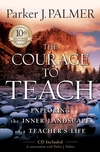 The Courage to Teach: Exploring the Inner Landscape of a Teacher's Life, 1st Ed. by Parker J. Palmer, Jossey-Bass, 1998.
The Courage to Teach: Exploring the Inner Landscape of a Teacher's Life, 1st Ed. by Parker J. Palmer, Jossey-Bass, 1998.
From the introduction...
"This book is for teachers who have good days and bad -- and whose bad days bring the suffering that comes only from something one loves. It is for teachers who refuse to harden their hearts, because they love learners, learning, and the teaching life." - Parker J. Palmer
Teachers choose their vocation for reasons of the heart, because they care deeply about their students and about their subject. But the demands of teaching cause too many educators to lose heart. Is it possible to take heart in teaching once more so that we can continue to do what good teachers always do -- give heart to our students?
In The Courage to Teach, Parker Palmer takes teachers on an inner journey toward reconnecting with their vocation and their students -- and recovering their passion for one of the most difficult and important of human endeavors.
See the book's ACORN record for call number and availability.
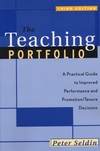 The Teaching Portfolio: A practical guide to improved performance and promotion/tenure decisions, 3rd Edition,
by Peter Seldin, Anker Publishing Co., 2004.
The Teaching Portfolio: A practical guide to improved performance and promotion/tenure decisions, 3rd Edition,
by Peter Seldin, Anker Publishing Co., 2004.
From the foreword...
Since the publication of the first edition of this best-selling guide, tens of thousands of faculty have used The Teaching Portfolio: A practical guide to improved performance and promotion/tenure decisions to prepare teaching portfolios. This third edition continues its focus on self-reflection and documenting teaching performance, and has also been significantly revised and expanded. Its straightforward approach, practical suggestions, step-by-step instructions, and field-tested recommendations will prove invaluable to those involved in evaluating and improving teaching.
Now organized into five parts, this edition includes new information on web-based electronic teaching portfolios, descriptions of how seven colleges and universities have actually implemented portfolios, and 22 new sample teaching portfolios from an array of disciplines and institutions. All were developed under the guidance of a skilled portfolio mentor.
See the book's ACORN record for call number and availability.
Exploring Signature Pedagogies: Approaches to Teaching Disciplinary Habits of Mind, by Regan A. R. Gurung, Nancy L. Chick, and Aeron Haynie, Stylus Publishing, 2009.
From the foreword...
How do individual disciplines foster deep learning, and get students to think like disciplinary experts? With contributions from the sciences, humanities, and the arts, this book critically explores how to best foster student learning within and across the disciplines.
This book represents a major advance in the Scholarship of Teaching and Learning (SoTL) by moving beyond individual case studies, best practices, and the work of individual scholars, to focus on the unique content and characteristic pedagogies of major disciplines.
Each chapter begins by summarizing the SoTL literature on the pedagogies of a specific discipline, and by examining and analyzing its traditional practices, paying particular attention to how faculty evaluate success. Each concludes by the articulating for its discipline the elements of a "signature pedagogy" that will improve teaching and learning, and by offering an agenda for future research.
Each chapter explores what the pedagogical literature of the discipline suggests are the optimal ways to teach material in that field, and to verify the resulting learning. Each author is concerned about how to engage students in the way of knowing the habits of mind, and the values used by experts in his or her field.
Readers will not only benefit from the chapters most relevant to their disciplines. As faculty members consider how their courses fit into the broader curriculum and relate to the other disciplines, and design learning activities and goals not only within the discipline but also within the broader objectives of liberal education, they will appreciate the cross-disciplinary understandings this book affords.
See the book's ACORN record for call number and availability.
Qualitative Research: A Guide to Design and Implementation , by Sharan B. Merriam, Jossey-Bass, 2009.
From the publisher: This thoroughly revised and updated classic once again presents a practical guide to understanding, designing and conducting a qualitative research study, as well as, helps readers understand the theoretical and philosophical underpinning of this research paradigm. The third edition includes new material on types of qualitative research; on the role of a theoretical framework in designing a study; a step-by-step guide to analyzing qualitative data; and an addendum for graduate students that provides a template for a thesis, dissertation, or grant application.
See the book's ACORN record for call number and availability.
The Practice of Problem-Based Learning: A Guide to Implementing PBL in the Classroom, by José A. Amador, Libby Miles, Calvin B. Peters, Jossey-Bass, 2006.
From the publisher: This book is a guide for the development and implementation of problem-based learning (PBL) in college-level courses. It provides practical advice from real professors, includes examples of PBL in action through every stage from problem development to implementation, and integrates cross-disciplinary experiences into the practice of PBL in the college classroom.
Its nuts-and-bolts approach makes it valuable to faculty, graduate teaching assistants, and faculty development professionals interested in learning how to do PBL, as well as to those already using PBL who would like to learn more about what other practitioners do in their classrooms.
Readers will learn what really is and isn’t PBL and why some choose to use it, what is its effect on the learning landscape, and how to overcome tricky issues such as class size, student resistance, controlling classroom chaos, conservative colleagues, assessment, and student evaluations. Extensive examples and resources for further study are included, making it a concise, yet comprehensive guide to launching a successful problem-based learning course on your own.
See the book's ACORN record for call number and availability.

How to Talk About Hot Topics on Campus: From Polarization to Moral Conversation, by Robert J. Nash, Jossey-Bass, 2008.
From the publisher: How to Talk About Hot Topics on Campus fills a gap in the student services and teaching and learning literature by providing a resource that shows how to construct and carry out difficult conversations from various vantage points in the academy. It offers a theory-to-practice model of conversation for the entire college campus that will enable all constituencies to engage in productive and civil dialogue on the most difficult and controversial social, religious, political, and cultural topics.
See the book's ACORN record for call number and availability.
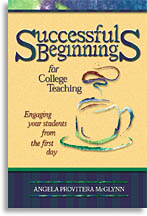
Successful Beginnings for College Teaching: Engaging Your Students from the First Day, by Angela Provitera McGlynn, Atwood Publishing, 2001.
From the publisher: Laying the groundwork for a successful semester starts with the first day of class. Author Angela Provitera McGlynn tells that the first day is not the day to pass out a syllabus and let everyone go. Rather, it's the day to set the context for the rest of the semester.
The author stresses the need for developing an atmosphere of respect for diversity while simultaneously providing a safe and exciting place to explore differences.
Included are a whole variety of ice breakers and other exercises to keep students engaged and interacting. In addition, such vital issues as classroom dynamics, motivating students, and dealing with incivility are addressed with suggestions for promoting positive interactions.
See the book's ACORN record for call number and availability.
Introduction to Rubrics: an assessment tool to save grading time, convey effective feedback, and promote student learning, by Dannelle D. Stevens and Antonia Levi, Stylus Publishing, 2005.
From the publisher: Research shows that rubrics save professors’ time while conveying meaningful and timely feedback for students, and promoting self-regulated and independent learning. The reason rubrics are little used in higher education is that few faculty members have been exposed to their use.
This book defines what rubrics are, and how to construct and use them. It provides a complete introduction for anyone starting out to integrate rubrics in their teaching.
The authors go on to describe a variety of processes to construct rubrics, including some which involve student participation.They demonstrate how interactive rubrics--a process involving assessors and the assessed in defining the criteria for an assignment or objective--can be effective, not only in involving students more actively in their learning, but in establishing consistent standards of assessment at the program, department and campus level.
See the book's ACORN record for call number and availability.
Beyond Tests and Quizzes: Creative Assessments in the College Classroom, by Richard J. Mezeske and Barbara A. Mezeske, Jossey-Bass, 2007.
From the publisher: Because the drive toward external assessment speaks almost exclusively in terms of standardized testing, we need to be reminded of the internal purposes of assessment: measuring learning for both student and teacher so that instruction can be adjusted and improved. This book is written for college instructors who are striving to creatively change assessment practice to better reflect learner-centered teaching. It is intended to consider not only the multiple ways in which individuals learn content, but also the multiple avenues to assessment the variety of learning styles demands.
Excerpts of this book are available online from the publisher. See the book's ACORN record for call number and availability.

Blueprint for Learning: Constructing College Courses to Facilitate, Assess, and Document Learning , by Laurie Richlin, Introduction by Shirley Ronkowski, Stylus Publishing, LLC, 2006.
From the publisher: This book familiarizes readers with course design elements; enables them to understand themselves as individuals and teachers; know their students; adapt to the learning environment; design courses that promote deep learning; and assess the impact of the teaching practices and design choices they have made. The author provides tools to create a full syllabus, offers guidance on such issues as framing questions that encourage discussion, developing assignments with rubrics, and creating tests. The book is packed with resources that will help readers structure their courses and constitute a rich reference of proven ideas.
See the book's ACORN record for call number and availability.
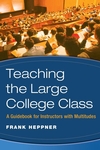
Teaching the Large College Class: A Guidebook for Instructors with Multitudes, by Frank Heppner, Jossey-Bass, 2007.
From the publisher: Teaching large classes is a fact of life for professors at many institutions. In addition to pedagogy, instructors of these courses must also be concerned with legal, ethical, financial, technological, personnel, and management issues. Virtually all introductory courses are large ones, as are the popular intermediate courses at large institutions. Typically, little or no training or instruction is provided to new professors about how to manage large classes successfully. This book is a valuable resource for any college teacher, adjunct or full-time, facing a large class. It will also be useful for college administrators who might want to issue it to teachers, especially adjuncts, assigned to large classes for the first time. A distillation of years of experience by the author who started his college teaching career in 1969 in teaching large classes and in coaching other professors to do the same, this guide is concise and user-friendly. It employs teaching-as-acting as a common theme, with many practical examples covering all of the major aspects of organizing, managing, and teaching a large lecture course in any field.
Excerpts of this book are available online from the author. See the book's ACORN record for call number and availability.
Books
Below is a sampling of the books in the CFT Library. Each book's title is a link leading to a review of the book originally published in the CFT's former newsletter, Teaching Forum.
-
A Life in School: What the Teacher Learned. Jane Tompkins. Addison-Wesley, 1996.
-
A Practitioner's Guide to Reflection in Service-Learning. Janet Eyler, Dwight E. Giles, and Angela Schmiede. Vanderbilt Press, 1996.
-
Building Learning Communities in Cyberspace: Effective Strategies for the Online Classroom. Rena Palloff and Keith Pratt. Jossey-Bass, 1999.
-
Changing Practices in Evaluating Teaching. Peter Seldin and Associates. Anker, 1999.
-
Classroom Assessment Techniques: A Handbook for College Teachers, Thomas A. Angelo and Patricia Cross. Jossey-Bass, 1993.
-
Critical Thinking: Theory, Research, Practice, and Possibilities. Joanne G. Kurfiss. Association for the Study of Higher Education, 1988.
-
Critical Thinking: What Every Person Needs to Survive in a Rapidly Changing World. Richard W. Paul. Center for Critical Thinking and Moral Critique, 1990.
-
Engaging Ideas: The Professor's Guide to Integrating Writing, Critical Thinking, and Active Learning in the Classroom. John C. Bean. Jossey-Bass, 1996.
-
First Day to Final Grade. A Graduate Student's Guide to Teaching. Anne Curzan and Lisa Damour. University of Michigan Press, 2000.
-
Interactive Learning: Vignettes from America's Most Wired Campuses. David Brown, editor. Anker, 2000.
-
Lessons from the Cyberspace Classroom: The Realities of Online Teaching. Rena Palloff and Keith Pratt. Jossey-Bass, 2001.
-
Service-Learning in Higher Education: Concepts and Practices. Barbara Jacoby and Associates. Jossey-Bass, 1996.
-
Teaching and the Case Method, 3rd ed., Louis Barnes, C. Roland Christensen, and Abby Hansen. Harvard Business School Press, 1994.
-
Teaching Online: A Practical Guide. Susan Ko and Steve Rossen. Houghton Mifflin, 2001.
-
Teaching Through Academic Advising: A Faculty Perspective. Alice G. Rienarz, Eric R. White, eds. Jossey-Bass, 1995.
-
The Courage to Teach: Exploring the Inner Landscape of a Teacher's Life. Parker J. Palmer. Jossey-Bass, 1998.
-
Women Faculty of Color in the White Classroom. Lucila Vargas, editor. Peter Lang Publishing, 2002.
Journals
Current Subscriptions
Following is a list of the journals to which the CFT currently subscribes. These journals do not circulate, but Vanderbilt affiliates are welcome to browse our holdings at 1114 19th Avenue South. Click on the ![]() button, where available, for electronic access to particular journals. Click the journal name to visit that journal's web site.
button, where available, for electronic access to particular journals. Click the journal name to visit that journal's web site.
Past Subscriptions
Below is a list of journals to which the CFT has subscribed in the past that are now available online through the Vanderbilt Central Library. Certain back issues of these journals (and others not listed here) are available for browsing at the CFT library.
| AAHE Bulletin | |
| Academic Leader | |
| Administrator | |
| Cause/Effect | |
| Educom Review | |
| Innovative Higher Education | |
| Journal of Legal Education | |
| New Directions for Higher Education | |
| New Directions for Institutional Research | |
| Teaching in Higher Education |
Discipline-Specific Journals on Teaching
There are a variety of journals that published articles on teaching and learning in higher education in particular disciplines. See this list of discipline-specific teaching journals to find journals in your discipline.
Many journal publishers and journal databases provide table-of-contents alert services by which you can sign up to receive emails listing the tables of contents of new issues of selected journals as they are published. Using such services with teaching journals in your field is an efficient way of keeping up with teaching issues in your discipline.
Videos
The CFT keeps a variety of videos in both VHS and DVD formats in its library, including videos produced by the Harvard University Derek Bok Center for Teaching and Learning and tapes of past CFT events and workshops. Here is a sampling of the library's video holdings.
-
A Private Universe (21 min)
In this video by A Private Universe Project, several Harvard College graduates are interviewed just after commencement. They are asked to explain why we experience different seasons, and their explanations are woefully incorrect. The point is made that students are very good at maintaining misconceptions in the face of education to the contrary and that teachers don't always know if their students are learning what they should be learning. -
What Students Want (25 min)
Online Preview
"Teachers make assumptions about what motivates, excites, and frustrates their students. But how do students themselves view teaching? What do they find exciting and frustrating in the classroom? To help answer these questions, the [Harvard University] Derek Bok Center for Teaching and Learning interviewed over forty Harvard undergraduates in the spring of 1992. What Students Want presents their reflections on what facilitates learning, definitions of good and bad teachers, and the nature of the student-teacher partnership." -- from the video description -
Race in the Classroom: The Multiplicity of Experience (19 min)
Online Preview
CFT Newsletter Review -
Women in the Classroom: Cases for Reflection (27 min)
Online Preview
CFT Newsletter Review
Articles and Essays
-
Teaching Forum Newsletter Articles
Between 1998 and 2003 the CFT published a newsletter called Teaching Forum which printed articles about a variety of teaching topics as well as notices of CFT news and events. Back issues of Teaching Forum are available online at the link above and in the library. -
Essays on Teaching Excellence
The Professional and Organizational Development (POD) Network is the professional organization to which teaching centers such as the CFT belong. POD publishes several "Essays on Teaching Excellence" each semester, and these are available at the link above. Note that you must have a VUNet ID and password to view these articles.
HOME | ABOUT CFT | PROGRAMS | SERVICES | RESOURCES
Center for Teaching |
General Questions? Web Site Questions? Copyright ©2009 |
